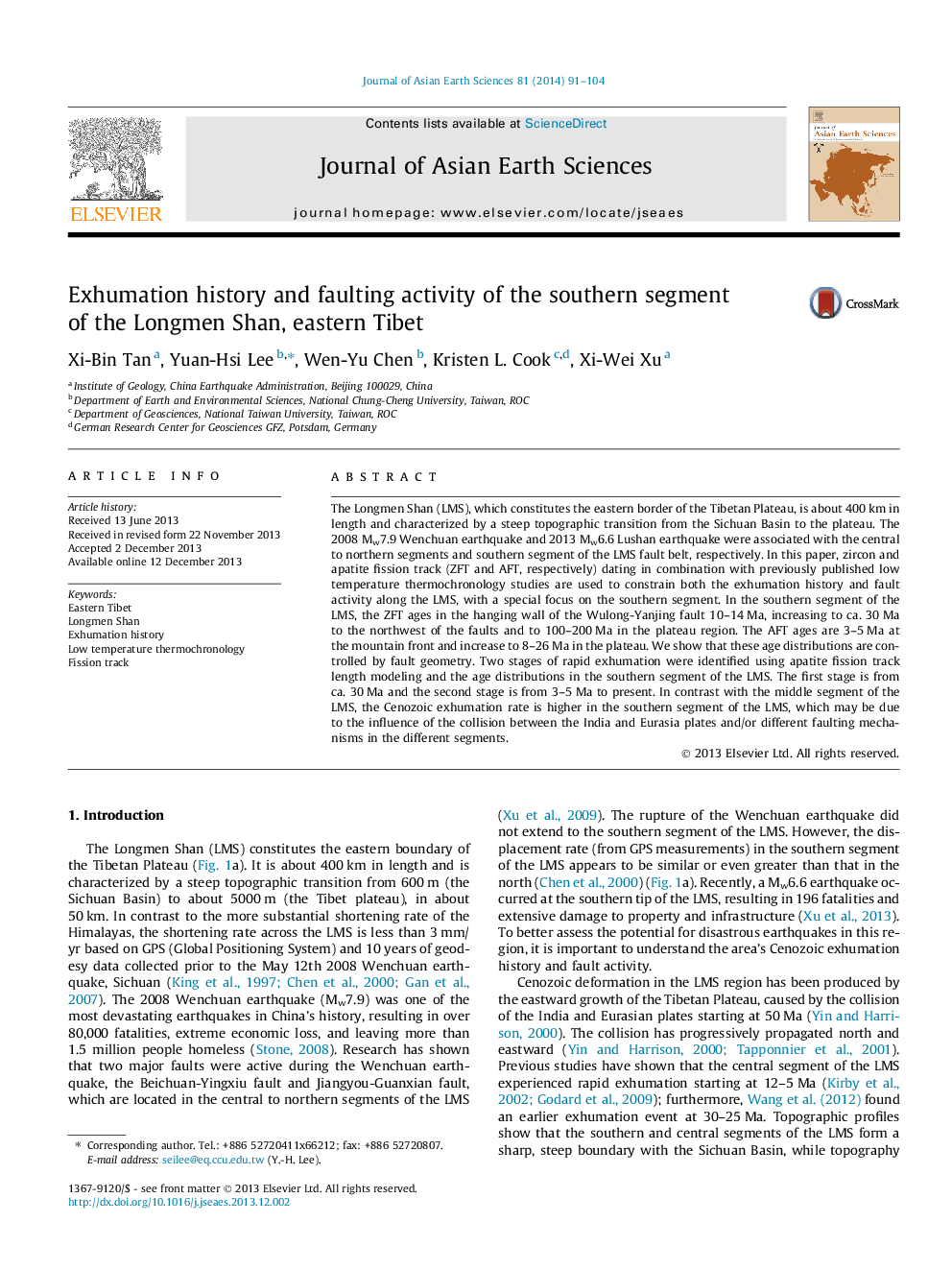| Article ID | Journal | Published Year | Pages | File Type |
|---|---|---|---|---|
| 4730819 | Journal of Asian Earth Sciences | 2014 | 14 Pages |
•Two stage rapid exhumations were revealed in southern segment of the Longmenshan Range, eastern Tibet.•The first stage is from ca. 30 Ma and the second stage is from 3–5 Ma to now.•The second stage of rapid exhumation is consistent with the second stage of activity of the Xianshuihe fault.•The age distribution of fission track dating is controlled by fault geometry and in-sequence faulting mechanisms.
The Longmen Shan (LMS), which constitutes the eastern border of the Tibetan Plateau, is about 400 km in length and characterized by a steep topographic transition from the Sichuan Basin to the plateau. The 2008 Mw7.9 Wenchuan earthquake and 2013 Mw6.6 Lushan earthquake were associated with the central to northern segments and southern segment of the LMS fault belt, respectively. In this paper, zircon and apatite fission track (ZFT and AFT, respectively) dating in combination with previously published low temperature thermochronology studies are used to constrain both the exhumation history and fault activity along the LMS, with a special focus on the southern segment. In the southern segment of the LMS, the ZFT ages in the hanging wall of the Wulong-Yanjing fault 10–14 Ma, increasing to ca. 30 Ma to the northwest of the faults and to 100–200 Ma in the plateau region. The AFT ages are 3–5 Ma at the mountain front and increase to 8–26 Ma in the plateau. We show that these age distributions are controlled by fault geometry. Two stages of rapid exhumation were identified using apatite fission track length modeling and the age distributions in the southern segment of the LMS. The first stage is from ca. 30 Ma and the second stage is from 3–5 Ma to present. In contrast with the middle segment of the LMS, the Cenozoic exhumation rate is higher in the southern segment of the LMS, which may be due to the influence of the collision between the India and Eurasia plates and/or different faulting mechanisms in the different segments.
